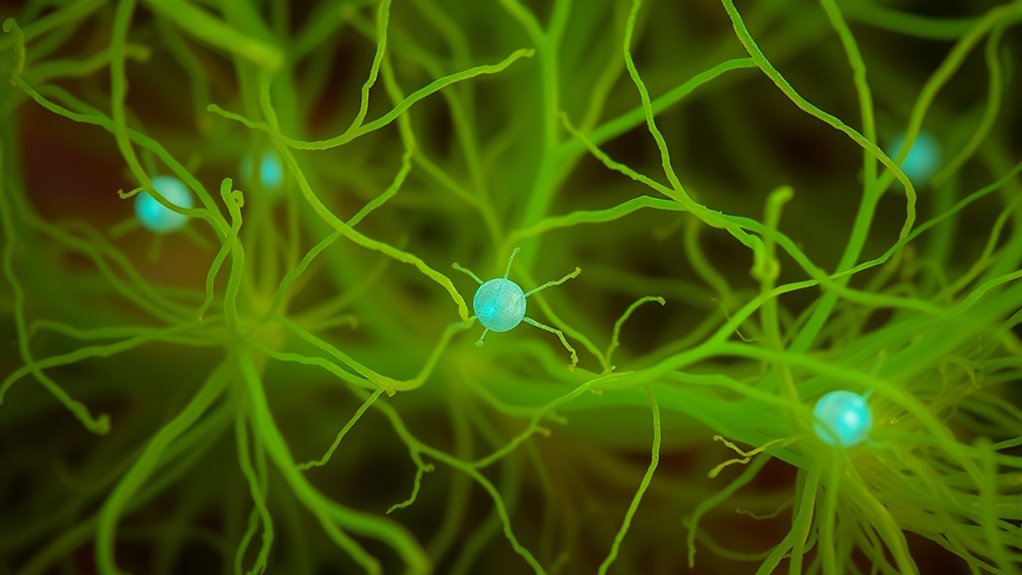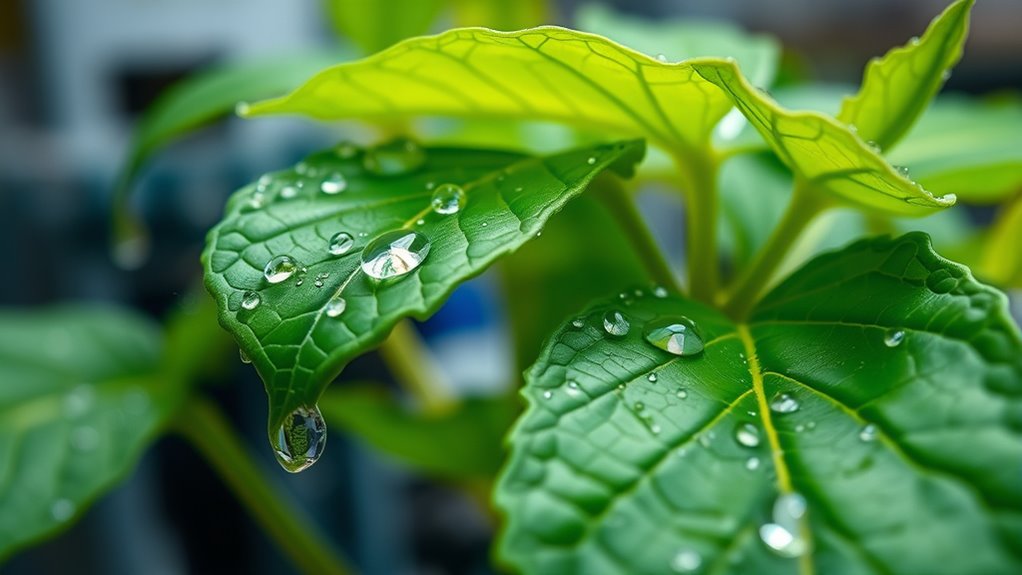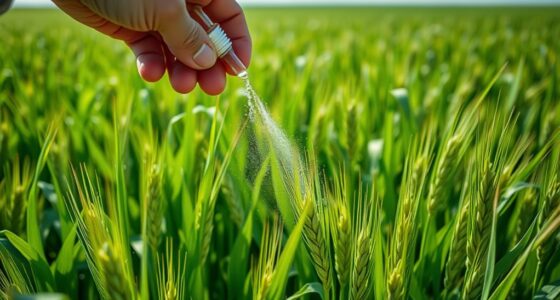Recent research has uncovered genetic ‘master switches’ that control stem cell activity in plants, opening new possibilities for growth and regeneration. These switches act as key triggers for processes like root development, tissue repair, and responses to environmental changes. By understanding and manipulating these genes, you can enhance plant resilience and recovery. Exploring these advances further can provide valuable insights into how plant regeneration can be shaped and optimized for agriculture and ecology.
Key Takeaways
- Recent studies identify specific genes acting as master switches to regulate plant stem cell activity.
- Researchers have uncovered signaling pathways that activate these genetic switches in response to environmental cues.
- Advances enable precise manipulation of stem cell master switches to enhance plant regeneration and growth.
- New findings suggest potential for developing crops with improved resilience and faster recovery from damage.
- Innovations in genetic regulation of master switches pave the way for sustainable agriculture and ecological restoration efforts.

Scientists are uncovering the key regulatory mechanisms that control plant stem cells, often referred to as the “master switches” of plant development. These switches are essential because they determine how plants grow, repair, and regenerate after injury. Understanding these processes gives you the power to influence plant regeneration, which is indispensable for agriculture, horticulture, and ecological restoration. At the heart of this research lies genetic regulation—the intricate way in which genes turn on and off to control stem cell activity. By decoding these genetic signals, scientists can manipulate plant growth patterns and improve their ability to recover from damage.
Unlocking plant stem cell regulators to enhance growth and recovery for sustainable agriculture and ecological resilience.
When you consider plant regeneration, think of it as a highly coordinated process governed by these master switches. They act like switches in a complex circuit, triggering specific genetic pathways that lead to new root growth, shoot formation, or tissue repair. This regulation isn’t random; it’s a finely tuned system where certain genes are activated in response to environmental cues or injury. For example, when a plant sustains damage, these master switches kick into gear, activating genetic pathways that promote cell division and differentiation. This guarantees the plant can replace lost tissues and continue growing healthily. Understanding how these switches operate opens up possibilities for enhancing regeneration, especially in crops that face environmental stresses.
Genetic regulation is central to controlling these master switches. Researchers are identifying key genes involved in maintaining stem cell populations and determining how they’re turned on or off during plant development. By manipulating these genes, you could potentially boost a plant’s regenerative capacity or control its growth patterns more precisely. For instance, modifying gene expression related to these switches can lead to stronger root systems or more resilient shoots. This knowledge also helps explain how plants adapt to their environment, switching their growth strategies based on external conditions. Ultimately, the goal is to harness this genetic regulation to improve plant resilience and productivity.
This research not only deepens your understanding of plant biology but also has practical applications. It could lead to developing crops that regenerate faster after drought or pest attacks, or plants that can be more easily propagated from cuttings. As scientists continue to explore these master switches, you’ll see more innovative approaches to sustainable agriculture and ecosystem management. The ability to control plant regeneration through genetic regulation could revolutionize how we cultivate and restore plant populations, making plants more adaptable and resilient in the face of climate change and other environmental challenges. Furthermore, advances in understanding highly coordinated genetic pathways involved in stem cell regulation could pave the way for biotechnological innovations in plant growth control.
Frequently Asked Questions
How Can Stem Cell Switches Be Used to Improve Crop Yields?
You can use stem cell switches to improve crop yields through genetic modification, which targets these master regulators to boost growth and resilience. By enhancing stem cell activity, you promote better root and shoot development, leading to larger harvests. This crop enhancement technique allows you to create plants that grow faster, resist pests, and tolerate environmental stresses, ultimately increasing productivity and ensuring food security.
Are There Ethical Concerns With Manipulating Plant Stem Cell Switches?
Yes, there are ethical concerns with manipulating plant stem cell switches. You might worry about the environmental impact, such as unintended effects on ecosystems or biodiversity. Genetic modification raises questions about long-term safety and the potential for cross-breeding with wild plants. While these techniques can improve crops, it’s crucial to carefully consider ethical implications to guarantee responsible use and avoid harming natural habitats or risking unforeseen consequences.
What Specific Plant Species Were Studied for Stem Cell ‘Master Switches’?
You should know that the research focused on model plant species like Arabidopsis thaliana to understand stem cell regulation. These plants are ideal for studying stem cell switches because of their simplicity and well-mapped genetics. By examining how stem cell regulation works in these species, scientists can better grasp how to manipulate plant growth and development, which could lead to advances in agriculture and biotechnology.
Can This Research Help Develop Drought-Resistant Plants?
Yes, this research can help develop drought-resistant plants through genetic modification. By understanding the master switches that control stem cell growth, you could target these genes to enhance water efficiency and resilience. However, you should also consider the ecological impact of such modifications, as altering plant genetics might affect surrounding ecosystems. Carefully investigating these effects guarantees that developing drought-resistant crops benefits both agriculture and the environment.
How Soon Might This Research Lead to Practical Agricultural Applications?
You might see practical agricultural applications within 5 to 10 years. Once scientists harness genetic modification techniques to target stem cell ‘master switches,’ they’ll need regulatory approval before commercial use. This process can take several years, depending on safety evaluations and regulations. As research progresses, expect breakthroughs in drought-resistant and high-yield crops, but widespread adoption depends on timely regulatory decisions and technological advancements.
Conclusion
By understanding these stem cell ‘master switches,’ you could open secrets to revolutionize agriculture and plant growth forever. Imagine being able to command plants to grow faster, stronger, and smarter than anything nature ever planned. This research isn’t just a step—it’s a giant leap toward transforming the future of farming, making plants into unstoppable powerhouses. Get ready, because what you thought was possible with plants is about to be completely shattered by these groundbreaking discoveries!








